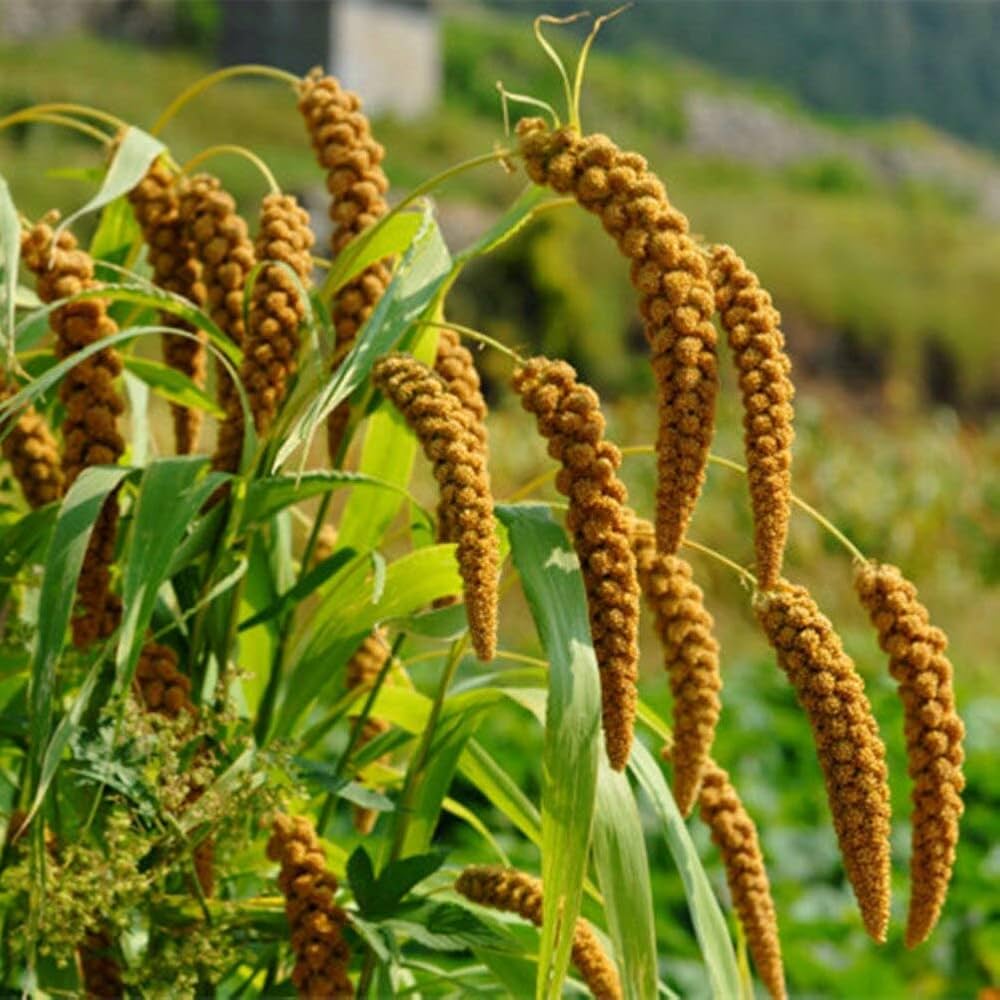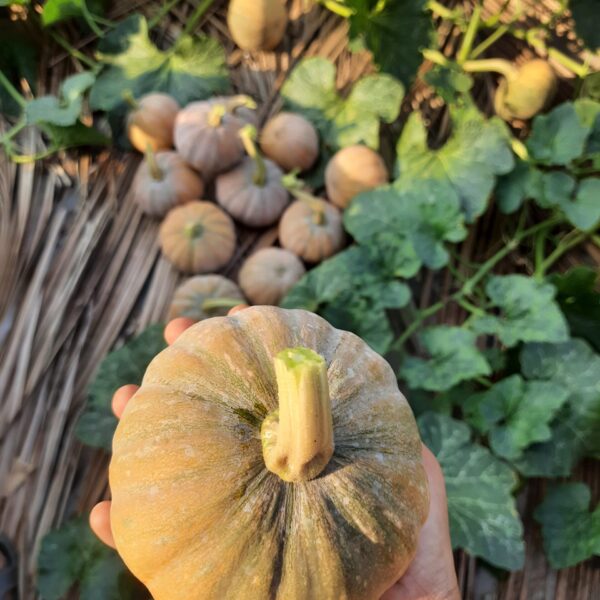Native Hill Foxtail millet / Thinai seeds
Native Hill Foxtail millet / Thinai seeds
Quantity: 250 grams
Growing foxtail millet (kangni) organically is a highly rewarding and sustainable practice. Whether you’re cultivating it for personal use or selling it, foxtail millet is a nutritious, low-maintenance crop that thrives in dry conditions and enriches the soil. With the right care and organic farming techniques, you can enjoy a bountiful harvest.
Order our Native Hill Foxtail millet / Thinai seeds today and start cultivating this nutritious, drought-resistant crop in your organic garden or farm. Grow healthy, sustainable food right in your backyard!
Native Hill Foxtail millet / Thinai seeds
How to Grow Foxtail Millet (Kangni) from Seeds Organically: A Step-by-Step Guide
Foxtail Millet, also known as Kangni (scientific name: Setaria italica), is a fast-growing, drought-resistant grain that has been cultivated for thousands of years, especially in India and China. Known for its high nutritional value and versatility in cooking, foxtail millet is a fantastic choice for anyone looking to grow their own healthy, organic food. Whether you want to make millet flour, millet porridge, or add it to salads and soups, growing foxtail millet organically from seeds is a sustainable and rewarding practice.
If you’re looking to grow your own foxtail millet and enjoy its numerous health benefits, our foxtail millet seeds are the perfect starting point for your organic garden. Here’s everything you need to know to successfully grow this nutritious crop.
Why Grow Foxtail Millet (Kangni) Organically?
Foxtail millet is an excellent choice for organic farming for several reasons:
- Nutrient-Rich: Foxtail millet is packed with essential nutrients, including fiber, iron, calcium, and antioxidants. It’s gluten-free and provides energy with a low glycemic index, making it ideal for people with diabetes or anyone looking to manage weight and boost health.
- Drought-Resistant: Foxtail millet is highly drought-tolerant, making it suitable for dry regions and ideal for organic farmers who want to reduce water consumption.
- Minimal Inputs: Foxtail millet requires few external inputs like fertilizers and pesticides. It thrives with minimal care, making it perfect for those practicing organic farming or sustainable gardening.
- Soil Health: Like other millets, foxtail millet can improve soil health by reducing erosion and helping maintain soil structure and fertility. It requires less synthetic fertilizer compared to other crops.
Native Hill Foxtail millet / Thinai seeds
Step-by-Step Guide to Growing Foxtail Millet from Seeds Organically
1. Choose the Right Location
Native Hill Foxtail millet / Thinai seeds grows best in areas with a warm climate and well-draining soil. Here are the key conditions to ensure successful growth:
- Temperature: Foxtail millet thrives in temperatures between 25°C to 30°C (77°F to 86°F). It is sensitive to frost, so plant it after the last frost in your region.
- Sunlight: Foxtail millet requires full sun to grow properly, so choose a location that gets at least 6 hours of sunlight per day.
- Soil Type: Foxtail millet prefers loamy or sandy soil that is well-drained. The soil should have a neutral to slightly acidic pH (between 6.0 and 7.0).
2. Prepare the Soil
Proper soil preparation is crucial for optimal growth. Here’s how to get your soil ready for planting foxtail millet seeds:
- Soil Amendments: Incorporate compost, well-rotted manure, or green manure into the soil to improve its organic content and fertility. This will provide the millet with the nutrients it needs without synthetic fertilizers.
- Drainage: Ensure the soil is well-draining. Foxtail millet doesn’t like waterlogged soil, so ensure good drainage, especially in heavy or clayey soils.
- Soil Preparation: Loosen the soil to a depth of about 3-4 inches to allow the seeds to germinate easily.
Native Hill Foxtail millet / Thinai seeds
3. Sowing Native Hill Foxtail millet / Thinai seeds
Planting foxtail millet is simple. Follow these steps for successful germination and growth:
- When to Plant: The ideal time to plant foxtail millet is during the early summer months or just after the monsoon season. The soil should be warm and moist, which aids in faster germination.
- Planting Depth: Sow the Native Hill Foxtail millet / Thinai seeds about 1–1.5 inches deep. Millet seeds are small, so ensure they are evenly distributed and not buried too deep.
- Spacing: Plant Native Hill Foxtail millet / Thinai seeds about 6–8 inches apart in rows. Leave 12–18 inches of space between rows for the plants to grow freely. This spacing ensures good airflow and prevents overcrowding.
4. Watering and Moisture Management
Foxtail millet is quite drought-tolerant, but it still requires proper watering during the growing phase:
- Initial Watering: Water the Native Hill Foxtail millet / Thinai seeds immediately after planting to help with germination. Ensure the soil is moist but not waterlogged.
- Post-Germination: Once the Native Hill Foxtail millet / Thinai seeds have germinated, reduce watering to once a week or as needed based on rainfall. Foxtail millet prefers deep watering rather than frequent shallow watering. Ensure the soil dries out between watering sessions.
- Avoid Waterlogging: Since foxtail millet is sensitive to standing water, ensure proper drainage to avoid root rot and fungal diseases.
5. Fertilizing Organically
Foxtail millet grows well with minimal fertilization, but organic amendments can help increase yield:
- Organic Fertilizers: Use compost or vermicompost as a natural fertilizer. Apply about 1–2 inches of compost around the base of the plant after the first few weeks of growth.
- Green Manure: Consider planting leguminous plants like soybean or cowpea in rotation with foxtail millet to fix nitrogen in the soil. This will naturally enrich the soil without the need for chemical fertilizers.
- Avoid Synthetic Fertilizers: Foxtail millet does well in soil with a balance of nutrients and doesn’t require chemical fertilizers. Stick to organic practices for the best results.
6. Weed Control
Weeds can compete with foxtail millet for nutrients and space, so it’s essential to keep them under control:
- Mulching: Apply a layer of organic mulch like straw, leaves, or grass clippings around the plants. Mulching helps retain moisture, suppresses weeds, and provides nutrients as it decomposes.
- Manual Weeding: Regularly remove weeds by hand or use an organic weed control method to keep the growth area clear.
7. Pest and Disease Management
Although foxtail millet is quite resilient, occasional pests and diseases may appear:
- Pests: Use neem oil or an insecticidal soap solution to control common pests like aphids, caterpillars, and leafhoppers.
- Diseases: Foxtail millet is susceptible to powdery mildew and leaf spot. If you see signs of disease, remove infected leaves and treat with an organic fungicide or baking soda spray.
- Crop Rotation: Practice crop rotation with other grains or legumes to prevent soil-borne diseases.
8. Harvesting Foxtail Millet
Foxtail millet is ready for harvest in about 3 to 4 months after planting, depending on the weather conditions.
- Timing: Harvest when the millet heads turn golden-brown and the seeds easily come off the panicle. The plants will start to dry and the grain will be hard to the touch.
- Manual Harvesting: Cut the millet heads with a sickle or harvesting knife. Dry them further in the sun for 2–3 days before threshing.
- Threshing: Once the millet heads are completely dry, separate the seeds from the panicles using a manual thresher or by gently beating them on a hard surface.
Why Choose Our Foxtail Millet Seeds?
If you’re looking to grow foxtail millet (kangni) organically, our foxtail millet seeds are a great option. Here’s why:
- Perfect for Organic Farming: Our seeds are ideal for those practicing organic farming. They require no chemicals or pesticides, ensuring a healthier and more sustainable crop.
- High Germination Rate: Our seeds have a high germination rate, ensuring a healthy and productive crop for your farm or garden.
- Health Benefits: Foxtail millet is a gluten-free, high-fiber grain that’s rich in iron, calcium, and antioxidants. Grow your own nutritious millet for a healthy diet.
- Drought-Tolerant: Foxtail millet thrives in dry conditions, making it a great choice for regions with limited rainfall.
- Low Maintenance: Foxtail millet requires minimal care, making it perfect for organic and sustainable farming practices.
Conclusion
Growing foxtail millet (kangni) organically is a highly rewarding and sustainable practice. Whether you’re cultivating it for personal use or selling it, foxtail millet is a nutritious, low-maintenance crop that thrives in dry conditions and enriches the soil. With the right care and organic farming techniques, you can enjoy a bountiful harvest.
Native Hill Foxtail millet / Thinai seeds
Order our Native Hill Foxtail millet / Thinai seeds today and start cultivating this nutritious, drought-resistant crop in your organic garden or farm. Grow healthy, sustainable food right in your backyard!
Native Hill Foxtail millet / Thinai seeds
| Weight | 300 g |
|---|







Reviews
There are no reviews yet.